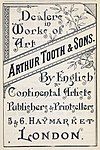Theatre Royal Haymarket

The Theatre Royal Haymarket (also known as Haymarket Theatre or the Little Theatre) is a West End theatre on Haymarket in the City of Westminster which dates back to 1720, making it the third-oldest London playhouse still in use. Samuel Foote acquired the lease in 1747, and in 1766 he gained a royal patent to play legitimate drama (meaning spoken drama, as opposed to opera, concerts or plays with music) in the summer months. The original building was a little further north in the same street. It has been at its current location since 1821, when it was redesigned by John Nash. It is a Grade I listed building, with a seating capacity of 888. The freehold of the theatre is owned by the Crown Estate.The Haymarket has been the site of a significant innovation in theatre. In 1873, it was the venue for the first scheduled matinée performance, establishing a custom soon followed in theatres everywhere. Its managers have included Benjamin Nottingham Webster, John Baldwin Buckstone, Squire Bancroft, Cyril Maude, Herbert Beerbohm Tree, and John Sleeper Clarke, brother-in-law of John Wilkes Booth, who quit America after the assassination of Abraham Lincoln. Famous actors who débuted at the theatre included Robert William Elliston (1774–1831) and John Liston (1776–1846).
Excerpt from the Wikipedia article Theatre Royal Haymarket (License: CC BY-SA 3.0, Authors, Images).Theatre Royal Haymarket
Suffolk Street, London Covent Garden
Geographical coordinates (GPS) Address Nearby Places Show on map
Geographical coordinates (GPS)
| Latitude | Longitude |
|---|---|
| N 51.508611 ° | E -0.131667 ° |
Address
Suffolk Street 18
SW1Y 4HT London, Covent Garden
England, United Kingdom
Open on Google Maps









